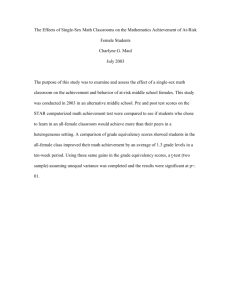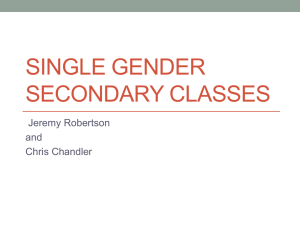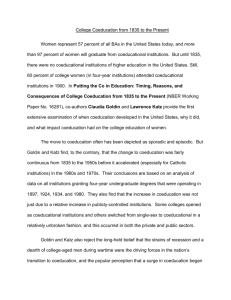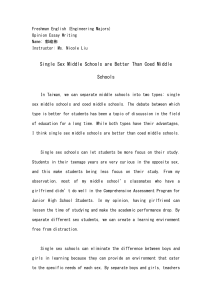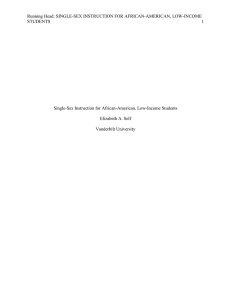The Effect of the Single-Sex Classroom on the Academic Achievement and Perceived Ability of Seventh-Grade Girls BERNADETTE WILLIAMSON-TAYLOR
advertisement
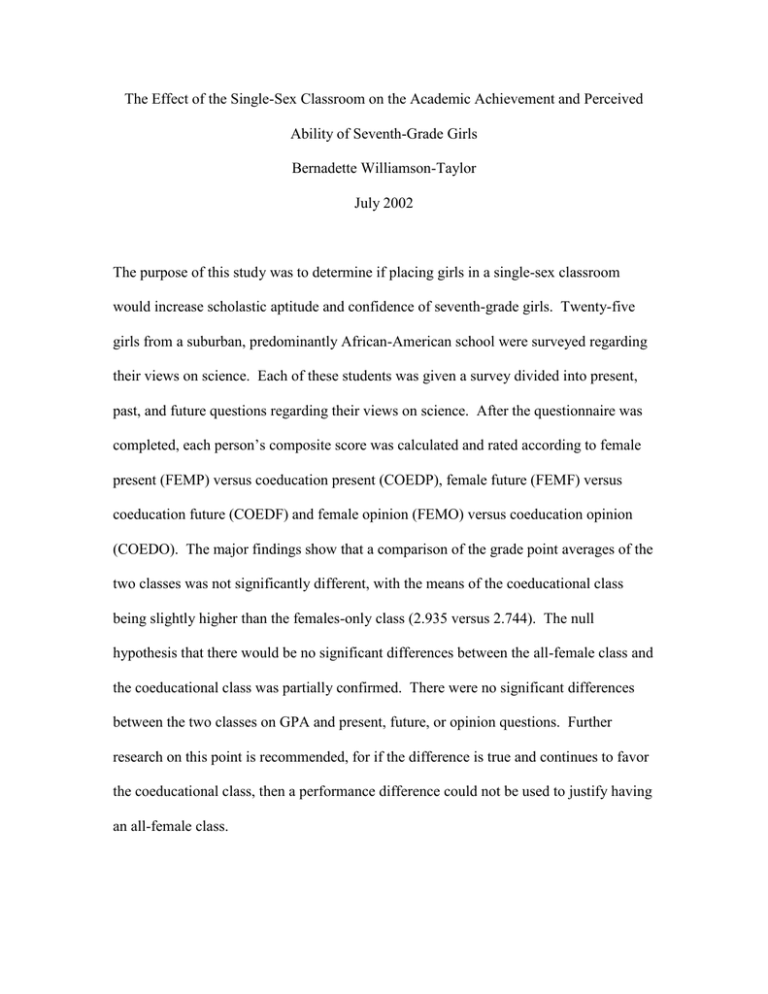
The Effect of the Single-Sex Classroom on the Academic Achievement and Perceived Ability of Seventh-Grade Girls Bernadette Williamson-Taylor July 2002 The purpose of this study was to determine if placing girls in a single-sex classroom would increase scholastic aptitude and confidence of seventh-grade girls. Twenty-five girls from a suburban, predominantly African-American school were surveyed regarding their views on science. Each of these students was given a survey divided into present, past, and future questions regarding their views on science. After the questionnaire was completed, each person’s composite score was calculated and rated according to female present (FEMP) versus coeducation present (COEDP), female future (FEMF) versus coeducation future (COEDF) and female opinion (FEMO) versus coeducation opinion (COEDO). The major findings show that a comparison of the grade point averages of the two classes was not significantly different, with the means of the coeducational class being slightly higher than the females-only class (2.935 versus 2.744). The null hypothesis that there would be no significant differences between the all-female class and the coeducational class was partially confirmed. There were no significant differences between the two classes on GPA and present, future, or opinion questions. Further research on this point is recommended, for if the difference is true and continues to favor the coeducational class, then a performance difference could not be used to justify having an all-female class.

